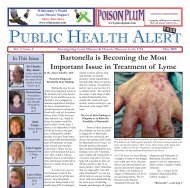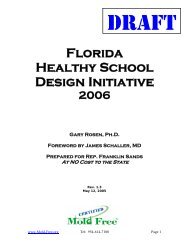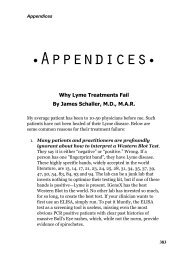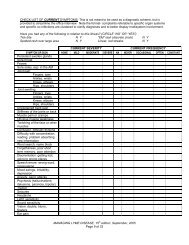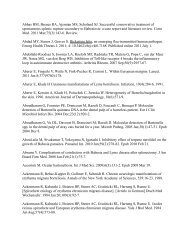Download Here - James L. Schaller, M.D., M.A.R., P.C
Download Here - James L. Schaller, M.D., M.A.R., P.C
Download Here - James L. Schaller, M.D., M.A.R., P.C
Create successful ePaper yourself
Turn your PDF publications into a flip-book with our unique Google optimized e-Paper software.
Environmentally Friendly Mold Remediation Techniques That Significantly Reduce Childhood AsthmaNote that if the wall cavity is filled with insulation material the precleaningand fogging do not work.Depressurization of the work area should always be used to ensurecontaminants are confined within the work area. A pressuredifferential of > 5 Pa (0.02 inches water column), which is used forasbestos abatement, is usually adequate to contain airborne moldcontaminants. In addition, remediation workers and project managersshould routinely check to see that the separation barrier, typicallyplastic sheeting, billows inwards into the isolated area. The nozzle ofone or more HEPA vacuums drawing from within a smallcontainment area, or a fan in a window in the contained area pointedout, may provide adequate depressurization for small jobs.Note: Much emphasis is being placed within the industry on using airscrubbers within contained areas. Whenever possible, specialized axialfans and ducting (such as those made by Americ) to connect thecontained area to the outside are preferred to pull both dust-laden airand odors from the work area and exhaust them outside. The axial fansalso provide the negative pressure needed to isolate the containment areasand do not stir up the air inside the containment as do scrubbers.We recommend that air scrubbers only be used outside of containments.9.5 Cleaning and Removal of Contaminated MaterialsThe primary goal of effective mold clean-up is to capture and removecontaminants from the building. As a general rule, it is best to cleanand remove as much contamination as possible before the materialshave completely dried after the water event.The following guidelines should be followed for determining whichmaterials can be cleaned and salvaged versus which should bediscarded. The EPA reference in Appendix B includes several detailedtables on how to properly deal with a wide number of water-damageditems. One of the EPA reference tables is reproduced on the nextpage. As always, our guidelines and the EPA-detailed tables are onlygeneral "guidelines" and should be supplemented by advice fromprofessionals as needed. For instance, if there are sick people in the73





